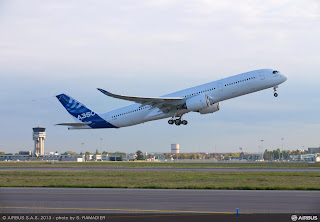The Flight Safety Foundation has found that a
crew’s inability to control the aircraft to the desired flight parameters
(airspeed, altitude, rate of descent) was a major factor in 45 % of 76 approach-and-landing
accidents and serious incidents. Flight-handling difficulties have occurred in
situations which included rushing approaches, attempts to comply with demanding
ATC clearances, adverse weather conditions and improper use of automation.
At many airports, ATC speed controls are
rigorously followed for expeditious handling of traffic. At times the controllers fail to take into
consideration presence of significant headwind or tailwind conditions present
at altitude and give speed control instructions that are incompatible with the
required vertical profile below FL100 and distance to go to land.
This places an unusually high workload on the
pilot to achieve the desired flight path and affects the crew’s ability
maintain situational awareness.
With modern aircraft designed to have efficient aerodynamic
characteristic which needs longer distances for descent and deceleration there
is an increased risk of an unstabilised approach developing, which may be difficult
to correct and culminate in either a go around or a poorly handled landing with
increased risk of runway excursions.




